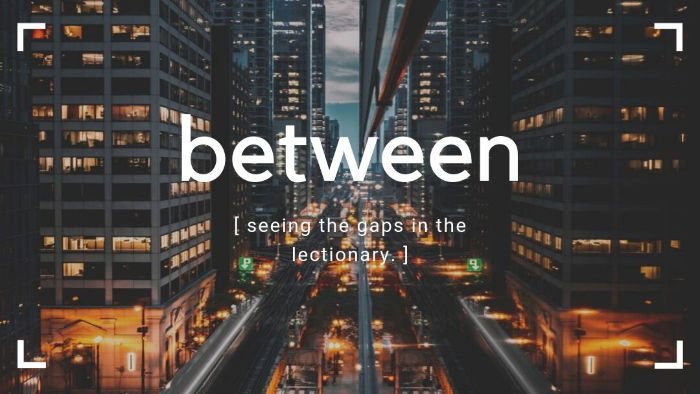
A look at the gaps in the lectionary.
This week: the gap between Easter 1 & 2
The text: John 20
The Second Sunday of Easter starts right where we left off. The tomb is empty. Mary tells people about it. Sees an angel and Jesus. The whole deal.
Then, we jump to evening. The disciples have locked themselves away. And somehow, Jesus still finds his way in.
In a literal sense, there is nothing between these texts. The lectionary hasn’t skipped over anything.
But in a narrative sense, we’ve fast forwarded to evening. We’ve lost hours of time. And in those hours, things have changed.
Two disciples who, that morning, had raced each other to the tomb, were now cowering behind a locked door.
There’s a story there, isn’t there?
Who is missing?
I’m also curious about what it means that Thomas wasn’t with them the next day. Like, what did he have going on that he’d not be there? And if everyone is freaking out and feeling totally threatened, wouldn’t he want to be there?
There’s a natural way we just glide over this unknowable part of the story that is actually quite weird. Like, it doesn’t completely register that fear has locked them all inside and at the same time, one seems to just come and go like it’s nothing. And they fill him in when he shows up. No biggie.
This has led me to speculate about what Thomas is up to.
And who (maybe?) isn’t?
Jesus appears to them in the locked room. Tells them not to be afraid. And then what is his one message:
“Receive the Holy Spirit. If you forgive the sins of any, they are forgiven them; if you retain the sins of any, they are retained.”
That’s Jesus message to the disciples. His one thing he wants to communicate to them.
Receive the spirit, forgive the sins of any.
Who is Jesus speaking about? What’s weighing on the disciples?
In Judas, we have the picture of retained sin. And one the disciples are likely longing to continue retaining.
But once we realize this, can Jesus truly mean this without an attempt to restore Judas to the fold? Dare we try to pretend this appeal to forgiveness is, like, general and totally unrelated to…um…recent events. Like that whole betrayal and the crucifixion. Seems kinda…timely.
And if it’s supposed to be some general encouragement to forgive people, doesn’t that seem like a copout given the very context?
A thematic switch
Lastly, there is something of a thematic switch from Easter Day into the Easter season. We were focused on the empty tomb and now to the different appearance of a risen Christ.
We move from the vague idea of a risen Christ to the realized one. One that the disciples can see and touch and gawk at. While these are the natural outgrowth of the whole resurrection thing (and clearly on people’s minds), it’s a whole other thing. One that demands some rational thought.
This shifting of attention, from the tomb to the locked room, draws us out of a place of marveling and into a place of witnessing and understanding. Just as many switch readily from joy and celebration to reason and understanding.
As we approach this moment of revealing, perhaps we linger in that joy a bit longer. Feel the celebratory hope and revel in the chance to see Jesus again.
